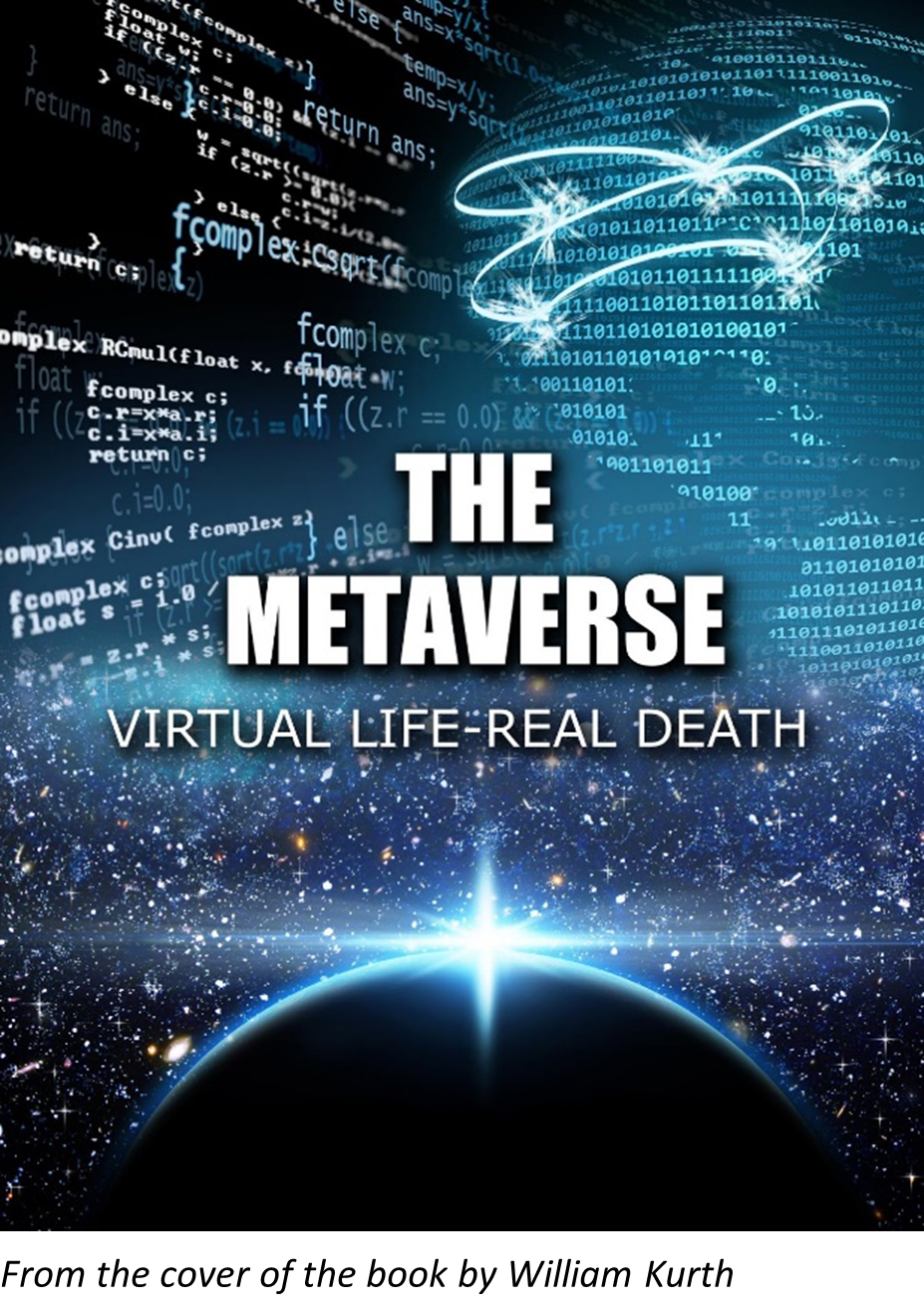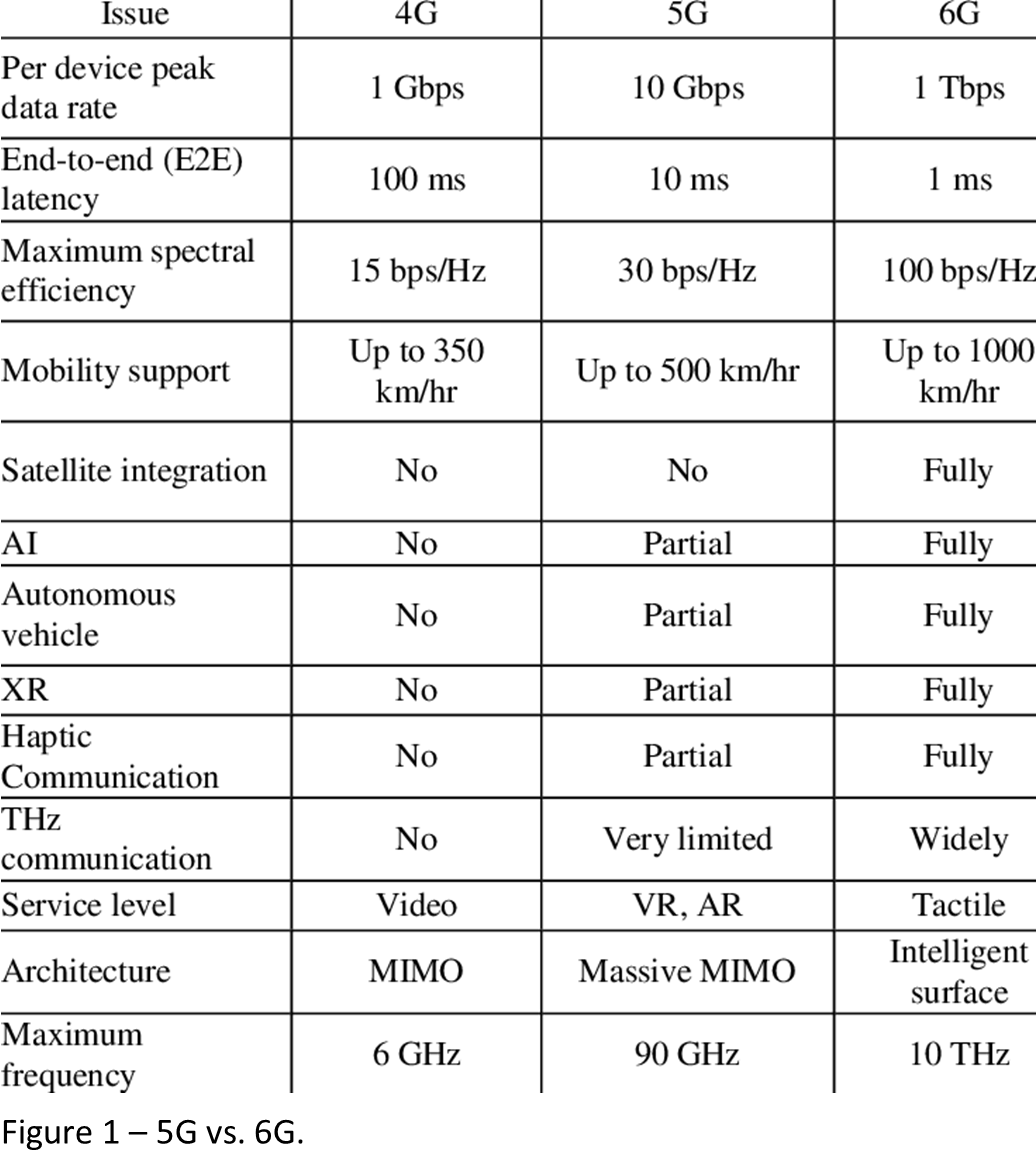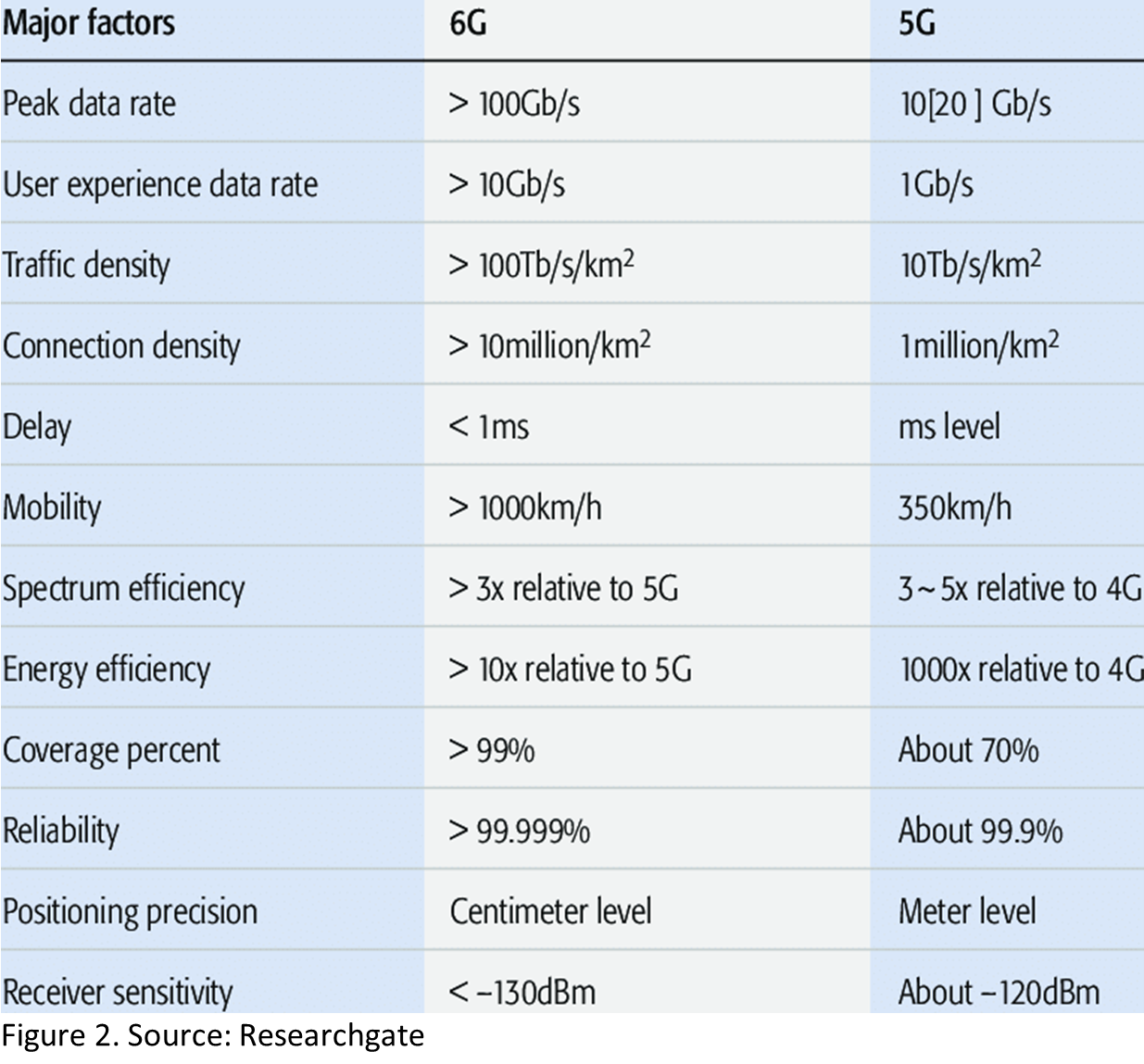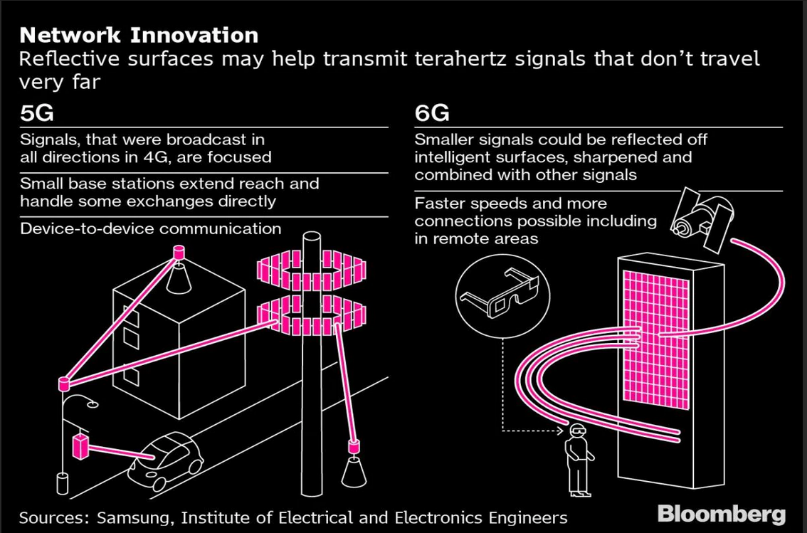The evolution of 5G to beyond 5G (B5G) and as, as many want to call it, 6G may offer us some surprises. With the emergence and evolution of the metaverse and web 3.0, is it possible that what is B5G will not resemble anything near what we have become accustomed to before 5G (B45G) (yay, another acronym)?
As virtualization becomes the solution for so many things, it is not that far-fetched to think that wireless may evolve from a single, stand-alone, interconnected platform or technology to a component of a larger technological ecosystem. Perhaps it will simply be dumb hardware scattered everywhere and its functions and control are virtual (we are already partway there).
Bear with me, please, while I present my case on B5G and the metaverse. But first, I believe a short discussion about why 6G will not be a stand-alone platform, is warranted.

Many of us envision 6G as the next-generation wireless network. However, at this stage of the game, while it certainly will be a ramp-up of wireless platforms and technologies, I am not convinced it will be as revolutionary a step in the wireless ecosystem as has been the case with earlier generations.
In fact, I have been finding more and more data that 6G will not be a generation, but merely the natural evolutionary progression of 5G (for example – https://www.academia.edu/54042607/A_Way Towards 6G). And Theodore Rappaport, founding director of NYU wireless, penned this paper back in August – 5G’s “Killer App” Will Be 6G. Moreover, an interesting quote from Professor Andy Sutton, principal telecommunications network architect and design engineer at BT is: “If we get 5G right, there will be no need for 6G.” Even the 3GPP organization’s new logo, states 5G Advanced, which I see more of a way to move towards 6G without getting in the fray around 5G and 6G.
IMHO, 5G will be the last generation of the wireless we know today until we start playing in the THz space (meaning the real THz – 1000 GHz, although many like to start THz discussions at 300 GHz+) or a radically new or different (Free-space optical – FSO, quantum?) technology for communications evolves. That is regardless of the hype and marketing to keep the 6G moniker alive. So, let us unpack that a bit.
My perspective is that as we evolve wireless technology, more and more of the progression is simply evolutionary vs. revolutionary steps, with things like AI thrown in for good measure. Even at THz frequencies, B5G will use the same spectrum physics and RF theory as 5G (and 4G, and 3G, and…).
When one examines the characteristics of B5G it is simple MOTS, only faster, with less latency and better performance. Figures 1 and 2 show a high-level flyover around the changes. But by looking at it, there are no “earth-shattering” global changes in the technology – just improvements, some major, like multiple-in, multiple-out (MIMO) and reconfigurable intelligent surfaces (RIS), for example. And these will remain the core technologies for B6G as well, just on steroids, to accomplish the lofty performance targets set for 6G. That may change someday but for now and in the immediate future, it will not.

For example, one of the waveform formats of 5G NR is based on orthogonal frequency-division multiplexing schemes (OFDM – CP-OFDM and DFT-s-OFDM) with adaptive modulation including quadrature phase-shift keying (QPSK) and various flavors of quadrature amplitude modulation (QAM – 16-QAM, 64-QAM, 256-QAM and likely higher eventually). These are not new modulation schemes. Rather just advancements in current schemes scaling B5G. See:
https://www.researchgate.net/publication/352873367_Optimized_Waveforms_for_5G-6G_Communication_with_Sensing_Theory_Simulations_and_Experiments) for a deep dive into the math behind waveforms for 5G and 6G. In short, this shows that, mathematically, the waveforms are fundamentally the same.

However, the enhanced performance requirements for B5G will demand increasingly stringent requirements for parameters such spectral efficiency (SE) and energy efficiency (EE). One requirement for that will be the evolution of 5G modulation schemes.
Take OFDM, for example. One path will evolve it to OFDM with index modulation (OFDM-IM). The same with other waveforms such as generalized frequency division multiplexing (GFDM), filter bank multi-carrier (FBMC), and universal filtered multicarrier (UFMC). They too will evolve.
There is also the development of non-orthogonal multiple access (NOMA) as well as evolving spatial-division, multiple access (SDMA), and multi-functional antenna arrays.
As well, there is a reexamination of schemes that have been used throughout all the stages of G. For example, amplitude and phase-shift keying (APSK) could provide advantages in some circumstances because it has a much lower peak-to-average power ratio (PAPR). There is also discussion around flexible duplex, where the time or frequencies allocated are variable according to the load in either direction or a new scheme called division-free duplex or single-channel full duplex.
And there are others in think tanks such as Cohere Technology’s orthogonal time-frequency-space (OTFS) modulation (which is a revolutionary technology). But, who knows if or when such truly new technologies will integrate with B5G.
Modulation schemes are just one element of a rather complex platform. Similar evolutionary paths will occur in all of the layers we know and use for wireless.
Generational changes
If we look at the changes from 2G through 5G (we are going to skip 1G.) Each one raised the bar by adding a heretofore missing feature and improving performance in various ways. For example, 3GPP Release 18, commonly discussed as 5G advanced moves the needed from early 5G to the next level of it but does not add any “generational” upgrades. So far, there is nothing in the next iteration of 3GPP that is not already in 5G. As far as adding 6G to the 3GPP mix, that is not expected until Release 21 (little hard data and lots of uncertainty around this at present).
Much of B5G’s enhancements offer a playground for evolving and emerging platforms beyond traditional smartphone and broadband markets. It also brings non-terrestrial components into the fold such as the various flavors of satellites. And there will be other air-to-ground platforms, perhaps similar to the failed Alphabet Loon balloon concept. But certainly, new ones will emerge.
This simply up’s the ante so platforms and technologies such as eXtended Reality (XR), non-terrestrial Networks, reduced capability (RedCap) connectivity, integrated access backhaul, precise positioning, Sidelink, etc. become integrated. It also adds new features and technologies such as “cell-less” networks via RIS’ where everything becomes an RF radiator

All of this enables tomorrow’s vision of B5G; unshackled from just person-to-person and machine-to-machine (M2M) communications. It will evolve and integrate new concepts such as being a distributed neural network that provides communication links to fuse the physical, cyber, and biological worlds and moves it to the metaverse. This evolved metaworld will be an era in which everything will be sensed, connected, and intelligent, and multitudes of virtual worlds will exist.
While this will, one day, certainly come to be, B5G will rely on existing technologies for some time to come (until say, OTFS becomes a reality, for example).
Now, I believe the above discussion establishes my position. There is so much more to the discussion, but it lays out the idea that 5G to B5G is just evolving existing technologies (so far, at least). Therefore, to end this rant and circle back to the title of this paper.
All of this is leading up to a bit of a different theory for B5G. Not one that requires brain damage to present, but rather more of a food for thought theory – IMHO, more likely than not, B5G is simply an app in the next generation of the internet – the brundlefly of the metaverse and web 3.0.
This is an interesting paradigm – culling out B5G as the reinvention of 5G. Or, is it just simply a functioning element of a much broader and ubiquitous network. Whether one calls it the internet or metaverse, the implications are the same.
Let us stop for a moment and drill down on that and the latest buzzwords du jour – the metaverse, and web 3.0 – and see how B5G will evolve and integrate, yes integrate with the latest reinvention of today’s versions.
Facebook’s move to rename itself to Meta is a stroke of genius. In an instant, Zuckerberg and company validated the next level of our digital existence.
However, the term metaverse has been around for some time. It is one of those abstract concepts that is, simultaneously, old, new, fictional, and the future of computing as we know it, as well as a brave new world. The industry has been busy hype-ing this term, lately, to add some pzazz to the quickly aging and well-worn internet and to stimulate more interest in B5G.
So, will B5G simply be a component of the metaverse and web 3.0? Certainly, an interesting thesis. But before we go there let us do a bit deeper dive on this.
The radical shift to Web 3.0 decentralizes the internet.. That is revolutionary. It means that big tech companies will no longer be the main guardians of the web’s data. Web 3.0 decentralizes the data and blockchain tech allows this data to be controlled and hosted, collectively, by users. Some see web 3.0 as a metaverse that uses the internet as its substrate. Why cannot 6G be an element of this?
As for the metaverse, it is described by Metaverse.org as an “open-source, decentralized, interoperable, platform for programmable digital assets and digital identities built on substrate.” This is somewhat convoluted, but others describe it with a bit more color.
For example, Wikipedia describes it as “the concept of a future iteration of the internet, made up of persistent, shared, 3D virtual spaces linked into a perceived virtual universe. The metaverse, in a broader sense, may not only refer to virtual worlds but the internet as a whole, including the entire spectrum of augmented reality.”
Nvidia also sees the metaverse as a bunch of worlds that are connected, virtually. Their term for that is Omniverse. Just as the physical universe is a collection of worlds that are connected in space, their omniverse is a collection of virtual worlds as rich as the real world – much like Wikipedia’s verbiage.
Pausing for a bit of brevity, one can just imagine the geeks of the world (and marketers, of course) sitting around coming up with some interesting names for the various virtual world the way it has happened with the various internets (medical, industrial, people, wearables, etc.) Will we have worlds called names like sweat-averse, debt-averse, (bet-averse, pet-averse, or eat-averse all focused on a particular topic. I have a high degree of confidence this will happen.
Interestingly, however, the metaverse is not all that new. It has been around for decades in the form of virtual reality (VR). In fact, there was a virtual world called Second Life, which was a virtual hangout space that started over 10 years and once had a million members.
So, will 6G simply be an app in the next generation of ubiquitous communications across the metaverse? Will devices and platforms Wi-Fi, satellites, wireless nets, edge networks, devices, etc. all simply be a virtualized world within? Perhaps, one never knows.
6G is being partially defined, in the research and scientific arenas, as being a decentralized network where devices themselves function as antennas. It will not be under the control of a single network operator. Hmmm… sounds like B5G, web 3.0, and the metaverse have something in common. My point is that 6G may simply be part of a universal, decentralized global umbrella ecosystem that has the possibility to house an infinite number of other decentralized platforms running on the next version of the internet.
At this stage of the game, most of this is the conjecture about future thinking of what can be. The evolution of the metaverse, 6G, and web 3.0 as something we can wrap our minds around and is functional is likely a decade or two away. All of this is quite interesting and somewhat enigmatic. But all of this is still in flux so who knows how all of this will eventually puzzle together.
Lastly, where will mmWave fit into the game? However, beyond the 6 GHz cutoff (eMBB), much of 6G will see its rise to fame in the mmWave spectrum. There is quite a bit of discussion around this and a variety of perspectives, some concur, others disagree but that is the only place enough contiguous, unencumbered spectrum exists to achieve the performance demanded by the next level of technology and platforms discussed earlier.
And not in the immediate 30 to 150 GHz space although that does have applicability for the immediate future since some spectrum is available there in sizeable contiguous chunks. This space can offer an early playground for those platforms and technologies that need wide bandwidths. Simultaneously, it will allow the industry to gain some experience that can scale to higher frequencies.
But the most interesting spectrum is that beyond 300 GHz where we have little practical knowledge (but plenty of theories and models). And eventually the real THz (1 THz and up) spectrum (although, again, there are a plethora of opinions about when, and how this THz spectrum will fit into the wireless landscape). 300 GHz and up is the land of the extreme promise of 6G, and a blank canvas where there is an abundance of unused, contiguous spectrum just waiting to be painted with the next generation of technologies and platforms.
In the end, once a decentralized wireless ecosystem evolves all bets are off for what is being prognosticated. Things like cell-less networks, holograms, virtual worlds, eXtended reality, and more interfacing with web 3.0 (or 4.0+) and the metaverse will radically alter what we are able to do, see, feel, and create a brave new world of imagery and interaction.
There is so much more to this, but I sense there are some who have already drifted off due to the length of this paper. And, while it is easy to theorize, dream, and presage, it is not quite as easy to practicalize. But all of this makes for wonderful and interesting conversations and will for years to come.







